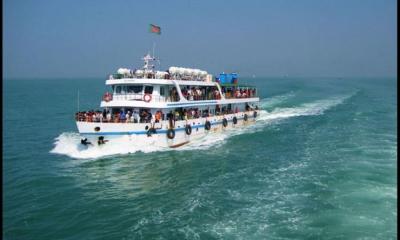DHAKA, Jan 15, 2018 (BSS) – Experts have called for accelerated moves for exploring blue economy saying it could reach the GDP (Gross Domestic Product) to a staggering 10 percent growth in one decade with Bangladesh’s now expanded maritime boundary.
“If we can properly tap the potentials of ‘blue-economy’, then we’ll be able to raise the GDP growth to 10 percent in the next one decade,” said Prof Mustafizur Rahman, Honorary Fellow of Center for Policy Dialogue while talking to BSS.
He also cited bright prospect in the country’s marine-resources based ‘Blue Economy’ following the settlement of maritime boundary disputes with neighboring Myanmar and India.
“We need to properly extract marine resources, protect these resources and thus utilize those in a sustainable manner,” Dr Mustafizur said, adding that the marine resources feature different mineral resources including oil and gas alongside fisheries and aquatic resources.
Last year the government formed the blue-economy cell to ensure proper exploration of marine resources besides ensuring proper coordination in this sector.
Additional Secretary Golam Shafiuddin, who is also in charge of this cell, told BSS that this Blue Economy Cell has been coordinating the activities of 17 ministries and divisions concerned. The meeting of this cell is held in every two months.
He said around 5 percent of GDP needs to be added from the sea and marine resources to the national economy to become a developed economy.
“The future of marine-based economy has a bright potential and the government is very much sincere in this regard,” Shafiuddin added.
Talking to the national news agency, chairman of Department of Oceanography of the University of Dhaka Professor Dr Kawser Ahmed said ‘The Territorial Water and Maritime Zones Act’ was first enacted in 1974 during the tenure of Father of the Nation Bangabandhu Sheikh Mujibur Rahman.
He said not only in Bangladesh, but many countries in the world were also not aware of such thing. “But, Father of the Nation had such farsightedness that he had then enacted the maritime boundary related act to ensure the rights of Bangladesh in the Bay of Bengal,”
Prof Kawser also echoed with the ‘Blue Economy’ cell chief saying that Bangladesh needs to add around 5 percent of GDP from the ‘Blue-Economy’ to the national economy to attain the SDGs.
He underscored the need for properly utilizing the marine resources without harming the environment of the sea.
The Oceanography Department Chairman also stressed the need for ensuring maritime safety and management, promoting eco-friendly tourism in the sea, generating power from the sea waves and air and extracting minerals from the coastal areas.
Besides, he suggested developing new land from shallow sea, extracting fisheries resources and creating skilled manpower for exploring marine resources.
Bangladesh owns more than 1, 18,813 square kilometres of sea territory. Article 2(1) of the United Nations Convention on the Law of the Sea 1982, extends to a zone called ‘Territorial Sea’ up to a maximum limit of 12 nautical miles.
Under the same convention, Article 55 grants the sovereign right to enjoy 200 nautical miles ‘Exclusive Economic Zone’ (EEZ), including its seabed resources from the baseline from which the breadth of the ‘Territorial Sea’ is measured.



